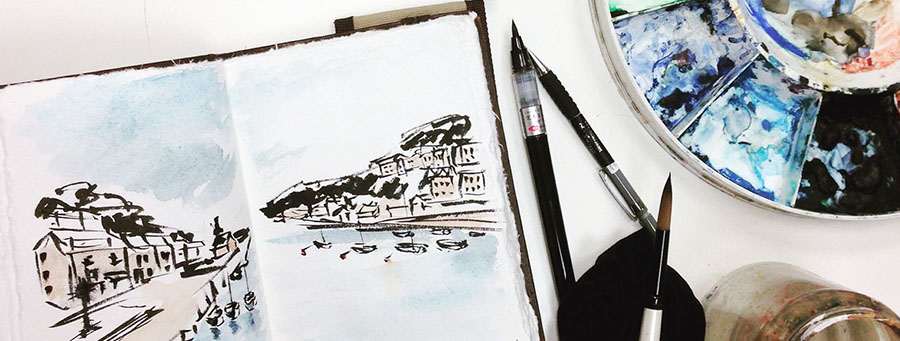In part one I prepared the copper plate with the hard ground. It's now dry and the engraving process can begin. I've made a sketch of roughly what I want to make so I can begin. I often use a magnifying glass. I'm not engraving into the copper, I'm just removing the etching ground where I want the acid to bite into the plate.
The design is completed and the reverse of the plate is covered with a protective layer so that the acid doesn't bite into the back. The plate is carefully placed in the acid bath to prevent air bubbles forming and is propped up on a wooden block so it doesn't just lie flat on the bottom. In this case I left it in the acid for 1 1/2 hours because the bath was quite cold. If it's warmer then the reaction is faster and it can be removed earlier. The plate is thoroughly rinsed under the tap.
Before the etching ground is removed, an etching needle is used to check that the engraving is deep enough in the copper. Then it can be removed with turpentine and this is how it looks:
Now we can print the etching. The whole plate is covered in etching ink, and then the excess is removed leaving the ink in the engraved lines. The plate is 'polished' with newspaper to remove more of the excess ink.
Once this is done the copper is bright and shiny again:
It's 'pulled' through the press in a steady and continuous movement, and voila! An etching! Every etching is re-inked and pulled through the press, one by one.
It can now be pegged up to dry. The paper will dry quickly but the ink will stay wet for a few days. Would you like to learn how to make etchings?











No comments:
Post a Comment